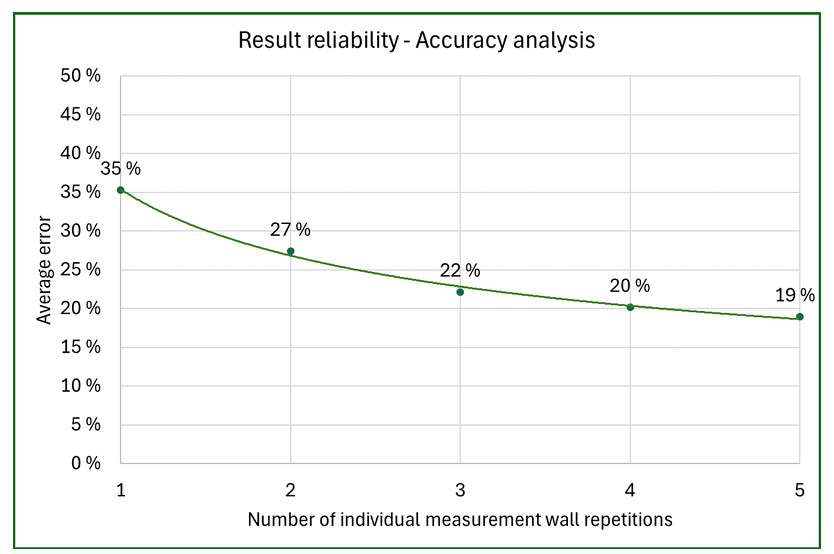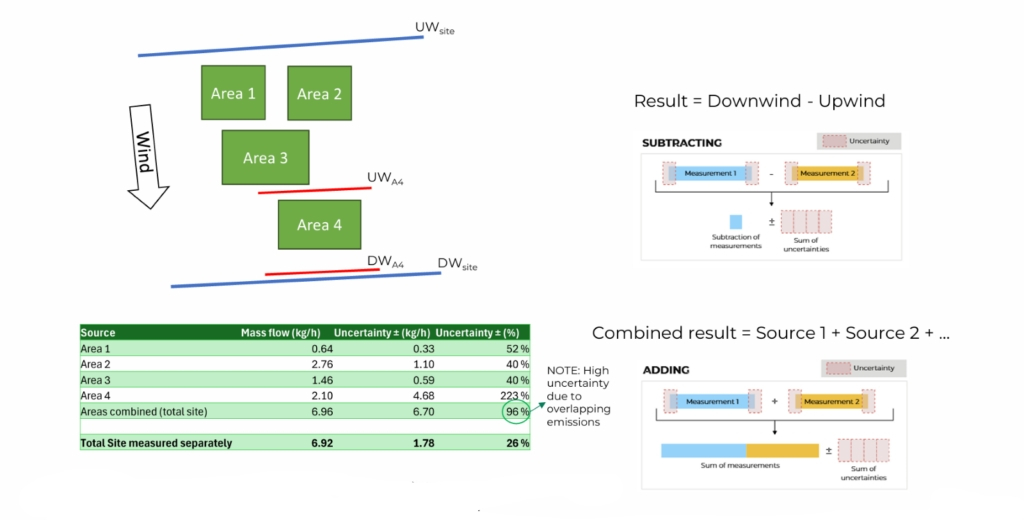Uncertainty of measurement acknowledges that no measurement can ever be perfect. Understanding and communicating uncertainty is critical to ensure reliable, credible, and actionable emissions data. Every measurement carries some level of uncertainty. Acknowledging this is the only reliable way to consider it and analyse how it affects measurements in different conditions. You can only manage what you acknowledge.
“Uncertainty of measurement acknowledges that no measurements can be perfect and is defined as a parameter, associated with the result of a measurement, that characterizes the dispersion of values that could reasonably be attributed to the thing being measured.”
Accuracy refers to how close a measurement result is to the true value. In complex, real-world settings like industrial facilities or oil and gas infrastructure, achieving accuracy requires more than simply good sensors. It demands a comprehensive measurement strategy for environmental variables, equipment performance, and site-specific conditions.
“Accuracy of measurement is the closeness of the agreement between the result of a measurement and a true value of the thing being measured.”
To evaluate the accuracy of a measurement, we must consider the factors contributing to the measurement and combine them to a total uncertainty. This means firstly understanding elements contributing to the measurement and evaluating their effect over prevailing measurement conditions.
The Role of Measurement Strategy in Reducing Uncertainty
A sound measurement strategy is one that enables repeatable, representative, and traceable results. It should be robust enough to maintain consistency across different sites and operational phases while providing the flexibility to respond to each site’s unique conditions. From measurement planning to execution, transparency and traceability are key principles for building confidence in the data.
Measuring real-world emissions in dynamic atmospheric conditions is far from straightforward. Site-level quantification must account for factors like air flow patterns, atmospheric turbulence, intermittent sources, and the technical limitations of sensing equipment. The key to producing representative results is a well-designed measurement strategy that adapts to these changing conditions in real time. Combined with transparent documentation and reporting of uncertainty data measured with a systematic measurement strategy, provides traceable and reliable emissions monitoring data.

Key Contributors to Site-Level Uncertainty
Uncertainty in quantifying emissions at the site level arises from a combination of factors:
- – Expanded uncertainty of all sensors used (as described in CEN/TS 17660-1:2021)
- – Concentration levels relative to detection limits
- – Number of repeated measurements
- – Repeatability of detected signals
- – Weather condition stability during data collection
- – Variability of emissions from individual sources
- – Spatial overlap of emissions from different sources
Unless every part of the measurement process is traceable, validated, and transparently documented, the resulting data will carry avoidable uncertainty that reduces its credibility and usefulness for decision-making.

Improving Reporting with Integrated Strategies
Improving site-level reporting isn’t just about better tools, it’s about smarter coordination.
Key actions include:
- – Synchronizing source-level and site-level measurements to enable reconciliation and validation of results
- – Choosing spatially granular measurement strategies that can pinpoint emission-intensive areas, helping to guide mitigation efforts and improve accuracy
By taking these steps, companies can ensure that their environmental reports not only meet regulatory requirements but also provide actionable insights for reducing emissions.
Transparent and Traceable Uncertainty Builds Confidence
A successful measurement strategy enables transparent and traceable uncertainty reporting. For measurement providers, the challenge is maintaining consistent quality and methodology across all conditions while meeting the site’s unique needs. Traceability and transparency in reporting build confidence among regulators, partners, and internal stakeholders. This is especially relevant in the context of EU2024/1787 Methane regulation and OGMP 2.0 Level 5, where site-level data reconciliation requires clear visibility into uncertainty margins and data quality.

Conclusion
Reliable, traceable, and transparent uncertainty analysis is essential for credible site-level emissions reporting. With the right measurement strategy, it’s possible to turn uncertainty from a weakness into a strength, by clearly demonstrating the reliability of reported results and building trust with regulators, stakeholders, and the public.

